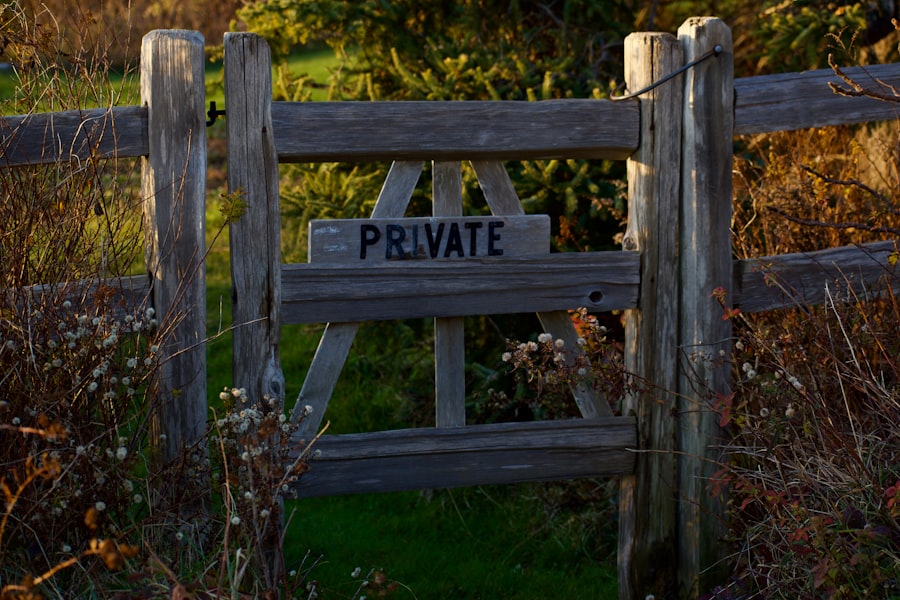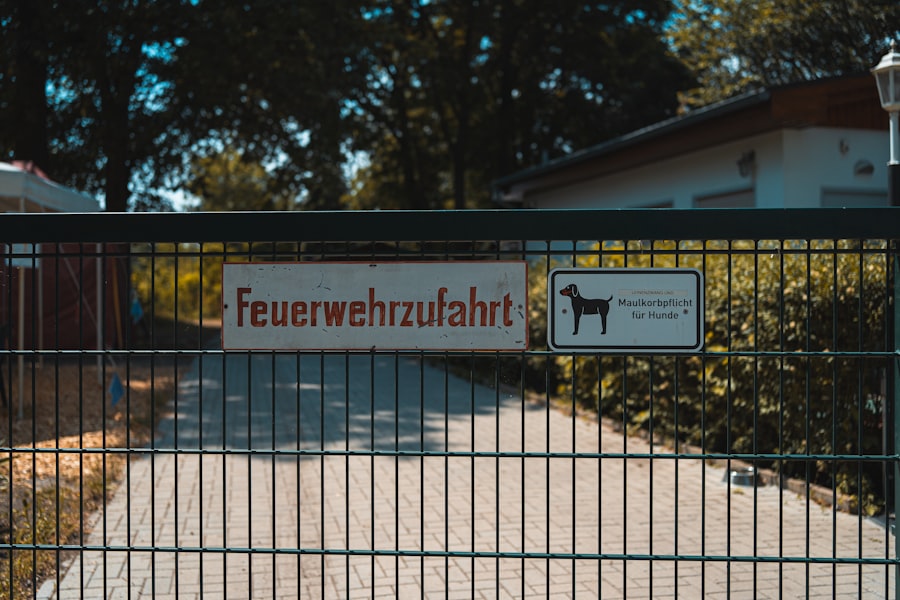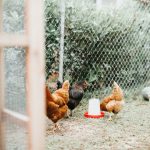Pet theft is a growing concern that many pet owners may not fully appreciate. Thieves target pets for various reasons, including resale, breeding, or ransom demands. Certain breeds, particularly purebred dogs and exotic animals, are often more desirable to thieves due to their high market value.
Pets left unattended in yards or vehicles are especially vulnerable to theft. The impact of pet theft can be severe for both animals and their owners. Pets are often considered family members, and their loss can cause significant emotional distress.
Stolen animals may face neglect, abuse, or exploitation in illegal activities such as dog fighting. To protect their pets, owners should be aware of the risks and take proactive measures. This includes supervising pets when outdoors, securing property boundaries, and avoiding leaving animals unattended in public spaces.
Microchipping pets and keeping identification tags up to date can also aid in recovery if theft occurs. By understanding the threat of pet theft and implementing preventive strategies, owners can significantly reduce the risk of their pets becoming victims and ensure their safety and well-being.
Table of Contents
- 1 Creating a secure coop
- 2 Using deterrents
- 3 Utilizing fencing
- 4 Establishing a routine
- 5 Seeking professional help
- 6 Being a responsible pet owner
- 7 FAQs
- 7.1 What are some effective ways to keep stray dogs away from chickens?
- 7.2 Are there any natural deterrents that can help keep stray dogs away from chickens?
- 7.3 What should I do if I encounter a stray dog near my chickens?
- 7.4 Are there any legal measures I can take to protect my chickens from stray dogs?
- 7.5 What are the potential risks of stray dogs attacking chickens?
Key Takeaways
- Understanding the threat: Recognize potential dangers to your pet’s safety, such as wildlife, traffic, and other animals.
- Creating a secure coop: Build or purchase a sturdy and secure coop to protect your pets from predators and other threats.
- Using deterrents: Implement deterrents such as motion-activated lights or sound devices to discourage predators from approaching your coop.
- Utilizing fencing: Install a secure and high-quality fencing around your pet’s living area to prevent them from wandering off and to keep predators out.
- Establishing a routine: Set a consistent routine for feeding, checking on your pets, and securing their living area to ensure their safety and well-being.
- Seeking professional help: Consult with a professional veterinarian or animal behaviorist for advice on how to best protect your pets from potential threats.
- Being a responsible pet owner: Take responsibility for your pet’s safety by providing a secure living environment and taking necessary precautions to protect them from harm.
Creating a secure coop
Implementing Security Measures
Creating a secure coop for your pets is essential in preventing theft and ensuring their safety. This can be achieved by implementing various security measures such as installing locks on gates and doors, using surveillance cameras, and securing windows and other entry points.
Minimizing Risks and Providing a Safe Environment
By creating a secure coop, pet owners can minimize the risk of their pets being stolen and provide them with a safe and protected environment. Furthermore, pet owners can also consider investing in a secure outdoor enclosure or run for their pets to prevent them from wandering off or being targeted by thieves. These enclosures can be equipped with secure fencing, locks, and surveillance cameras to provide an added layer of protection for your pets.
Peace of Mind for Pet Owners
By creating a secure coop, pet owners can have peace of mind knowing that their pets are safe and secure, even when they are not around to supervise them. Taking proactive measures to create a secure coop for your pets is crucial in safeguarding them from potential theft and ensuring their well-being.
Using deterrents

Using deterrents can be an effective way to prevent pet theft and discourage potential thieves from targeting your pets. There are various types of deterrents that pet owners can utilize, such as motion-activated lights, alarms, and even fake security signs to create the illusion of a well-protected property. Additionally, pet owners can also consider using scent deterrents such as predator urine or other animal repellents to deter potential thieves from approaching their property.
By using deterrents, pet owners can make their property less appealing to thieves and reduce the risk of their pets being stolen. Furthermore, pet owners can also consider using GPS tracking devices or microchipping their pets to make it easier to locate them in the event of theft. These technological deterrents can provide an added layer of security for your pets and increase the chances of recovering them if they are stolen.
By using deterrents, pet owners can take proactive measures to protect their pets and minimize the risk of them falling victim to theft. Implementing these deterrents can help pet owners create a safer environment for their pets and deter potential thieves from targeting them.
Utilizing fencing
Utilizing fencing is an important aspect of securing your pets and preventing them from being stolen. Installing a sturdy and secure fence around your property can help keep your pets contained and prevent them from wandering off or being targeted by thieves. Additionally, pet owners can consider using fencing materials that are difficult to climb or break through, such as chain link or wrought iron, to further enhance the security of their property.
By utilizing fencing, pet owners can create a physical barrier that deters potential thieves from accessing their pets and provides them with a safe and protected environment. Furthermore, pet owners can also consider installing gates with locks and surveillance cameras to further enhance the security of their property. This can help prevent unauthorized access to your property and provide you with the ability to monitor your pets and property remotely.
By utilizing fencing, pet owners can create a secure and protected space for their pets, minimizing the risk of them being stolen and ensuring their safety. Taking proactive measures to utilize fencing is crucial in safeguarding your pets from potential theft and providing them with a secure environment to thrive in.
Establishing a routine
Establishing a routine for your pets can help minimize the risk of them being stolen and provide them with a sense of security and stability. By establishing a consistent schedule for feeding, exercise, and outdoor time, pet owners can reduce the likelihood of their pets wandering off or being left unattended in vulnerable areas where they can be targeted by thieves. Additionally, having a routine can also help pet owners keep track of their pets’ whereabouts and monitor their behavior for any signs of distress or unusual activity.
By establishing a routine, pet owners can create a sense of predictability for their pets and minimize the risk of them becoming targets for theft. Furthermore, establishing a routine can also help deter potential thieves from targeting your pets, as they are less likely to be left unattended or vulnerable in a well-structured environment. By providing your pets with a consistent routine, you can help them feel safe and secure in their surroundings, reducing the likelihood of them being stolen.
Taking proactive measures to establish a routine for your pets is crucial in safeguarding them from potential theft and ensuring their well-being.
Seeking professional help

Expert Advice and Support
Professional security consultants or pet safety experts can provide pet owners with expert advice and support in creating a safe and secure environment for their pets. They can offer recommendations on how to improve property security, such as installing security cameras, motion-sensitive lights, and secure fencing.
Additional Supervision and Care
Seeking professional help can also involve enlisting the services of pet sitters or dog walkers who can provide additional supervision and care for pets when their owners are not around. This can provide an extra layer of security and peace of mind for pet owners who are concerned about their pets’ safety.
Furthermore, seeking professional help can involve working with local law enforcement agencies or animal control organizations to report any suspicious activity or concerns regarding pet theft in the area. By collaborating with professionals who specialize in pet safety and security, pet owners can take proactive measures to address potential threats and ensure the well-being of their pets.
Being a responsible pet owner
Being a responsible pet owner is crucial in safeguarding your pets from potential theft and ensuring their safety and well-being. This involves providing proper identification for your pets through microchipping or ID tags, as well as keeping them up to date on vaccinations and regular veterinary care. Additionally, responsible pet ownership also entails providing adequate supervision and care for your pets, ensuring that they are not left unattended in vulnerable areas where they can be targeted by thieves.
By being a responsible pet owner, you can take proactive measures to protect your pets from theft and provide them with a safe and loving home. Furthermore, responsible pet ownership also involves educating yourself about the potential risks of pet theft and taking proactive measures to minimize these risks. This may include implementing security measures such as surveillance cameras, locks, and fencing to create a secure environment for your pets.
Additionally, responsible pet owners should also be vigilant about reporting any suspicious activity or concerns regarding pet theft in their area to local authorities. By being a responsible pet owner, you can take proactive steps to protect your furry companions from potential theft and ensure their safety and well-being. In conclusion, understanding the threat of pet theft is crucial in taking proactive measures to protect your furry friends from falling victim to thieves.
Creating a secure coop, utilizing deterrents, utilizing fencing, establishing a routine, seeking professional help, and being a responsible pet owner are all important steps in safeguarding your pets from potential theft and ensuring their safety and well-being. By taking these proactive measures, pet owners can create a safe and secure environment for their pets to thrive in while minimizing the risk of them becoming targets for theft.
If you’re looking for ways to keep stray dogs away from your chickens, you may also be interested in learning about what vegetables quails eat. Check out this article on Poultry Wizard for more information on keeping your quails healthy and happy.
FAQs
What are some effective ways to keep stray dogs away from chickens?
Some effective ways to keep stray dogs away from chickens include installing a sturdy fence around the chicken coop, using motion-activated sprinklers or lights to deter dogs, and keeping the chickens in a secure and enclosed area.
Are there any natural deterrents that can help keep stray dogs away from chickens?
Yes, there are natural deterrents that can help keep stray dogs away from chickens. Some examples include using citrus peels, vinegar, or cayenne pepper around the chicken coop, as dogs are often repelled by these scents.
What should I do if I encounter a stray dog near my chickens?
If you encounter a stray dog near your chickens, it’s important to remain calm and avoid making sudden movements. Try to slowly and calmly move the chickens to a secure area, and then contact animal control or a local animal shelter to report the stray dog.
Are there any legal measures I can take to protect my chickens from stray dogs?
Laws regarding the protection of chickens from stray dogs vary by location, so it’s important to check with local authorities to understand your rights and options. In some areas, there may be laws in place that allow for the removal or containment of stray dogs that pose a threat to livestock.
What are the potential risks of stray dogs attacking chickens?
Stray dogs attacking chickens can result in injury or death to the chickens, as well as potential financial loss for the chicken owner. Additionally, stray dogs may carry diseases that can be transmitted to the chickens, posing a health risk to both the chickens and the humans who handle them.
Meet Walter, the feathered-friend fanatic of Florida! Nestled in the sunshine state, Walter struts through life with his feathered companions, clucking his way to happiness. With a coop that’s fancier than a five-star hotel, he’s the Don Juan of the chicken world. When he’s not teaching his hens to do the cha-cha, you’ll find him in a heated debate with his prized rooster, Sir Clucks-a-Lot. Walter’s poultry passion is no yolk; he’s the sunny-side-up guy you never knew you needed in your flock of friends!







